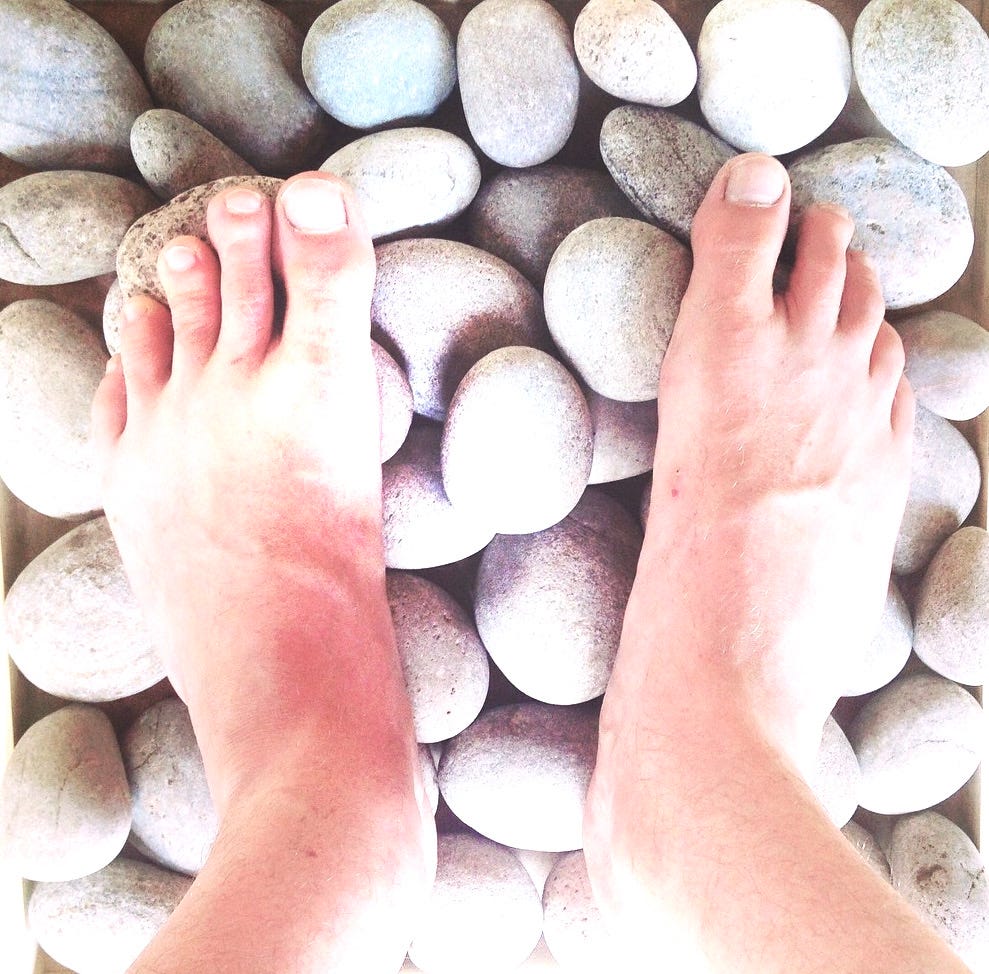It’s been a rainy day in the Lake District, where I’ve come for a few days break. Yesterday, I spent four hours paddling up and down Coniston Water, fulfilling a childhood dream to find Wild Cat Island. As I drew my paddle through the water again and again under the shadow of the Old Man of Coniston, I found myself thinking about repetition, learning and mastery.
When I first tried standing on a paddle board, a few years ago, it took an hour or so to find my feet, as I searched for ways to coordinate the action of paddling with the constant need to adjust my balance in response to the movement of the water. I fell off a few times, and then something changed. Now I can do a headstand on my paddle board, and I can paddle five miles without even worrying that I might fall in.
So what happened?
The simplest answer is time and repetition. I’ve been exposed to the challenge of standing and paddling on an unstable surface for many hours. On lakes, rivers and seas. Through this exposure, my capacity to balance and move has improved. But what exactly does repetition mean here? The surface I stand on is in constant movement, the water that I’m paddling is in constant movement, and the conditions that I’m paddling are often very different. Nothing is being repeated. As Heraclitus said, ‘No man steps in the same river twice, for it’s not the same river and he’s not the same man.’
The Russian neurophysiologist Nikolai Bernstein was one of the first people to systematically refute the idea that we learn motor skills through repetition. He recognised a fundamental paradox in the idea that we learn through mechanical repetition or drilling. If we can’t perform an action efficiently or elegantly, how could repeating that inelegant action again and again lead to improvement? There must be something else going on. Bernstein talked about repetition without repetition.
‘Practice, when properly undertaken, does not consist in repeating the means of solution of a motor problem time after time, but in the process of solving this problem again and again by techniques which we changed and perfected from repetition to repetition.’
For Bernstein, repetition isn’t about doing the same thing again and again. It’s about building ever more nuanced and varied patterns of action, which allow us to find appropriate solutions to motor problems when we encounter them in the infinitely varied environments in which we live and move. Alain Berthoz has used the term ‘simplexity’ to describe the paradoxical nature of our learning and action. It’s the capacity to apply one similar solution across many varied, complex environments - like paddling an SUP up a lake, walking on different kinds of ground, hitting a forehand, or writing on different surfaces (paper, chalkboard, sand).
To give another example, the other day, as I was cycling up the hill to the University of Leeds from the train station, I noticed that my cycle-clip had slipped. I removed one hand from the handlebars, reached down and pushed the clip back over my trouser leg, all while navigating my way through a gate. It felt simple, yet it was a complex movement that I’d never done before and probably will never repeat again. Simplexity.
So why does the idea of simplexity matter?
I think it’s worth exploring because it helps us to avoid the idea that repeating something again and again is going to lead to significant improvements in skill. It’s also worth considering because it explains the importance of practising skills in different environments, with different people, and with different levels of intensity, when searching for mastery. Learning a new skill takes time and repetition, but it also depends on variation and investigation. Everyone can learn to perform a complex task in the comfort of their own home, but they might not be able to repeat it under a spot light in front of an audience. That’s another layer of complexity. Apparently, when the pianist Glenn Gould wanted to liven up or deepen his playing, he would practise with the radio tuned into static and turned up so loud that he could barely hear the sound of his notes. This was so he could find new ways of playing, allowing him to concentrate on movement and touch instead of sound.
Bernstein recognised that mastery was fundamentally about the cultivation of dexterity. Because we can’t step into the same river twice. No golf shot or tennis stroke is ever a repeated action. We don’t act in isolation from the dynamic nature of the environment. So this week’s lesson is about the relationship between simplicity and complexity. It’s about repetition without repetition.
You’ll need a chair and a book that you don’t mind standing on.
Let me know if this sparked anything for you in the comments.



